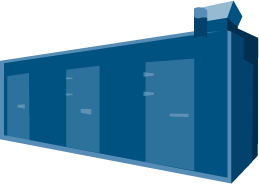HEATING + DESTRUCTION
Encore Flow Destroys Sludge Filled with PFAS, Nutrients and Heavy Metals
After sludge has gone through our Encore Flow treatment process, from mineral flocculation to sludge drying, PFAS contaminated sludge is now ready for baking to a temperature high enough to destroy.
Sludge Destruction
Our Process Destroys PFAS, Nutrients + Contaminants
The dried sludge is now ready for baking in our system, which generates enough heat to dry more sludge. At 1000° C the PFAS bonds are broken down, turned to ash, and dropped to the bottom of the chamber. The remaining ash is used for materials like cement or is recycled to capture the rare earth minerals that are trapped in the sludge.
Encore Flow is the only turnkey clean water solution.
If we used our current wastewater system to create a circular economy, without getting rid of PFAS compounds and other dangerous chemicals that plague our water table, we would be doing the world a disservice.
At Encore Flow, our rare earth minerals allow for ongoing treatment of all influent as well as activate sludge, and our end process destroys PFAS compounds and nutrients safely. The end product is safe air, safe water, and clean building materials.
Only with Encore Flow can we create a true circular water economy.
Are you testing for PFAS?
Although the EPA has not yet set PFAS standards for sludge and wastewater, the agency has long been aware of the problem. Problems have been reported for decades, with PFOA and PFOS in the water, and in fields, spread on grazing lands. Many tests have confirmed that these chemicals are contaminating animals and humans in rural areas.
LEARN MORE
Let's Talk
Request More Information
Fill out our form and someone from our team will send you more information shortly.



